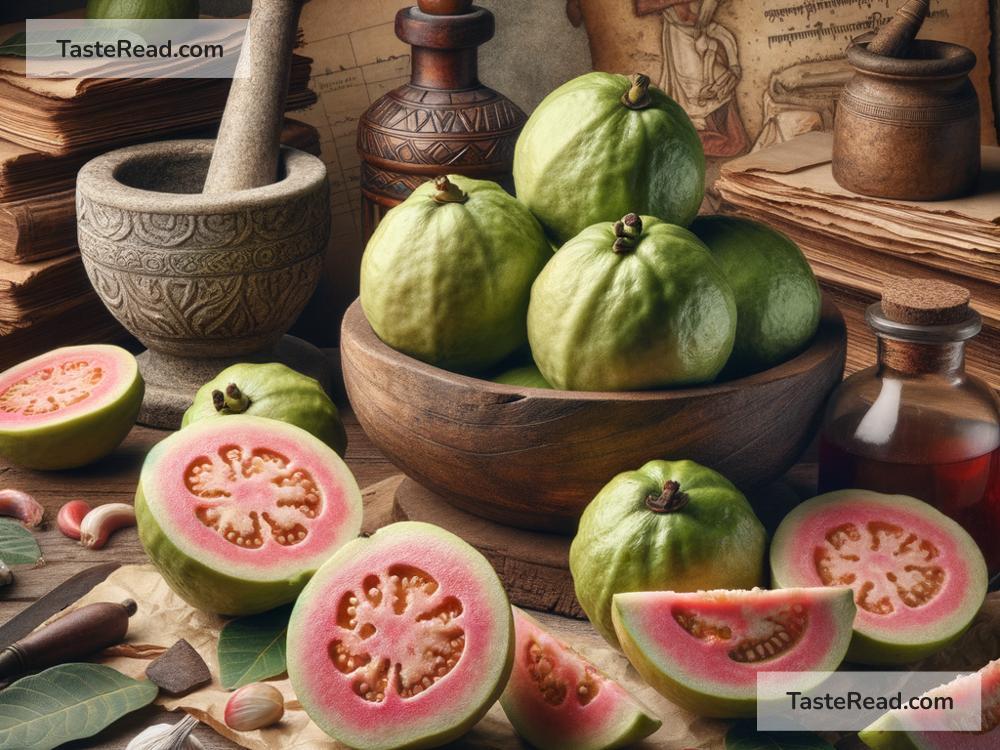The Surprising Story of Guavas in Ancient Remedies
When you think about guavas, you probably imagine a sweet, juicy fruit that’s perfect for a refreshing snack. Guavas are popular today in smoothies, salads, and jams. But did you know that this humble fruit has an ancient history as a healing remedy? Across ancient cultures, guavas and their leaves were considered tools for promoting health and curing ailments.
Let’s take a closer look at the surprising story of guavas in ancient remedies and how this fruit became a natural medicine in many parts of the world.
The Origins of Guavas
Guavas are believed to have originated in Central and South America, specifically in regions like Mexico and Peru. These areas offered the warm, tropical climate that guavas thrived in. As early indigenous peoples explored the resources around them, they discovered guavas not just as a food source but also as a plant with healing properties.
The scientific name of the guava tree is Psidium guajava, and it’s part of the myrtle family of plants. What makes guavas special is not just their sweet pulp but also their leaves, seeds, and even their bark. Ancient people found ways to use every part of the guava tree to address various health concerns.
Guavas as a Remedy for Stomach Issues
One of the earliest uses of guavas was for treating stomach problems. Indigenous populations in Mexico and South America found that guava leaves, when brewed into tea, helped relieve diarrhea and stomach infections. These communities didn’t have access to modern medicine, so they relied on plants like guavas to help them recover naturally.
Even scientific studies today confirm that guava leaves contain compounds with antibacterial properties. These compounds can fight harmful microbes in the digestive system, proving that ancient healers were onto something remarkable thousands of years ago.
For instance, ancient Mayans often prepared teas or infusions made from guava leaves to treat upset stomachs. They believed the leaves helped balance the gut, and they passed this knowledge down through generations.
Guavas for Wounds and Skin
Guavas also played a role in treating wounds and improving skin health. Ancient civilizations discovered that guava leaves had antimicrobial qualities, making them effective in cleaning wounds and preventing infections.
In many cultures, freshly crushed guava leaves were applied directly to cuts, burns, or insect bites. Some communities even ground guava bark into a paste and used it as a salve to speed up wound healing. Such remedies were especially useful for outdoor workers or hunters who didn’t have access to modern bandages or ointments.
Additionally, guava-based treatments were used for skin ailments like rashes and acne. Guavas contain a high level of vitamin C, which is essential for repairing and nourishing the skin. Ancient healers may not have fully understood the science behind it, but they knew guavas were good for skin health!
Strengthening the Body
Another surprising use for guavas in ancient remedies was as a tonic to strengthen the body. Guavas are packed with nutrients like fiber, potassium, and vitamins A and C. Many cultures used guavas to prevent fatigue and improve overall health.
For example, indigenous groups often recommended eating guavas or drinking guava leaf tea to people who felt weak or sluggish. They believed guavas “restored balance” to the body. Pregnant women were often encouraged to consume guava, as it was thought to help with energy and provide nutrients for both mother and baby.
Some ancient healers even used guava leaf extracts to boost immunity during times of illness. Though they didn’t have the scientific understanding we do today, they likely noticed guavas’ ability to support the body’s natural defense systems.
Guavas in Ayurveda and Traditional Medicine
Guavas didn’t stay confined to Latin America. As travelers and traders carried plants across the globe, guavas found their way to Asia, where they became part of traditional medicine practices like Ayurveda.
In Ayurveda, guavas were valued for their ability to regulate digestion and treat colds. Guava leaves were often boiled and consumed as a tea to relieve coughs, mucus buildup, or throat irritation. They were also believed to help regulate blood sugar levels, making them a potential aid for diabetes management.
In Southeast Asia, guavas were used as remedies for fevers. Communities believed that drinking guava leaf tea lowered body temperature and helped the body recover faster. These traditions are still alive in some parts of Asia today, where guavas are considered a powerful natural remedy.
The Science Behind Guava’s Healing Powers
Modern science has confirmed many of the ancient beliefs about guavas. Guava leaves contain antioxidants like polyphenols and tannins, which have anti-inflammatory properties. They also have antibacterial compounds that fight infections, as ancient remedies suggested.
The fruit itself is rich in vitamin C, which can boost immunity, and dietary fiber, which supports healthy digestion. These nutrients explain why guavas were often viewed as a strengthening food.
A Fruit Full of History
It’s fascinating to think that the guava—a fruit we often take for granted—has such a rich history of healing in ancient remedies. From the Mayans of Central America to the Ayurvedic practitioners of India, guavas were treasured as tools for health and wellness.
Today, guavas continue to be celebrated not just for their flavor but also for their benefits. You can find guava leaf teas in wellness stores and see guava extracts in skincare products. The ancient wisdom of using guavas to heal lives on, proving that nature often holds the best solutions.
Next time you bite into a guava or sip guava tea, take a moment to appreciate its surprising journey through history. This fruit may be small, but its story is mighty!


